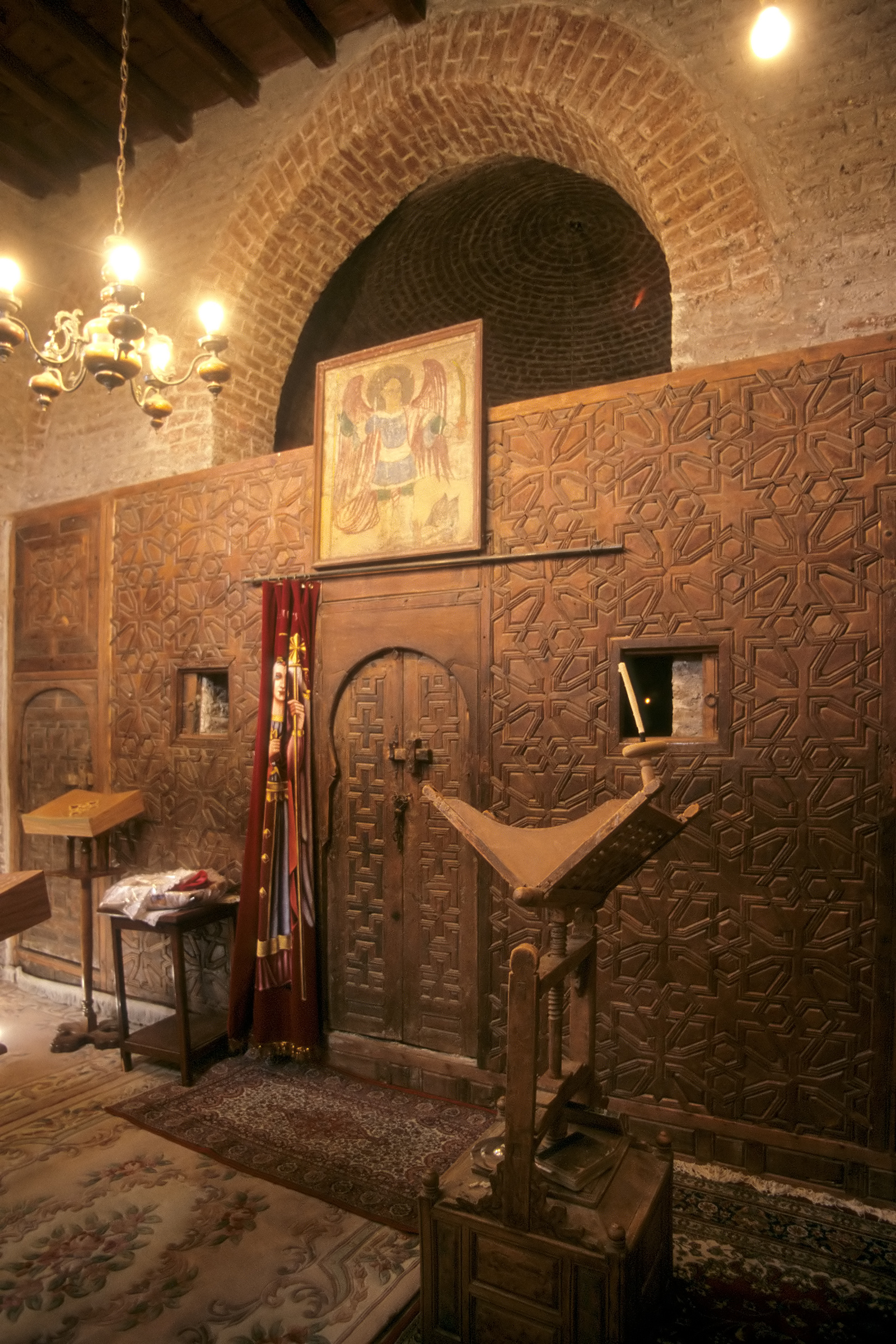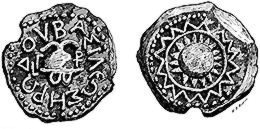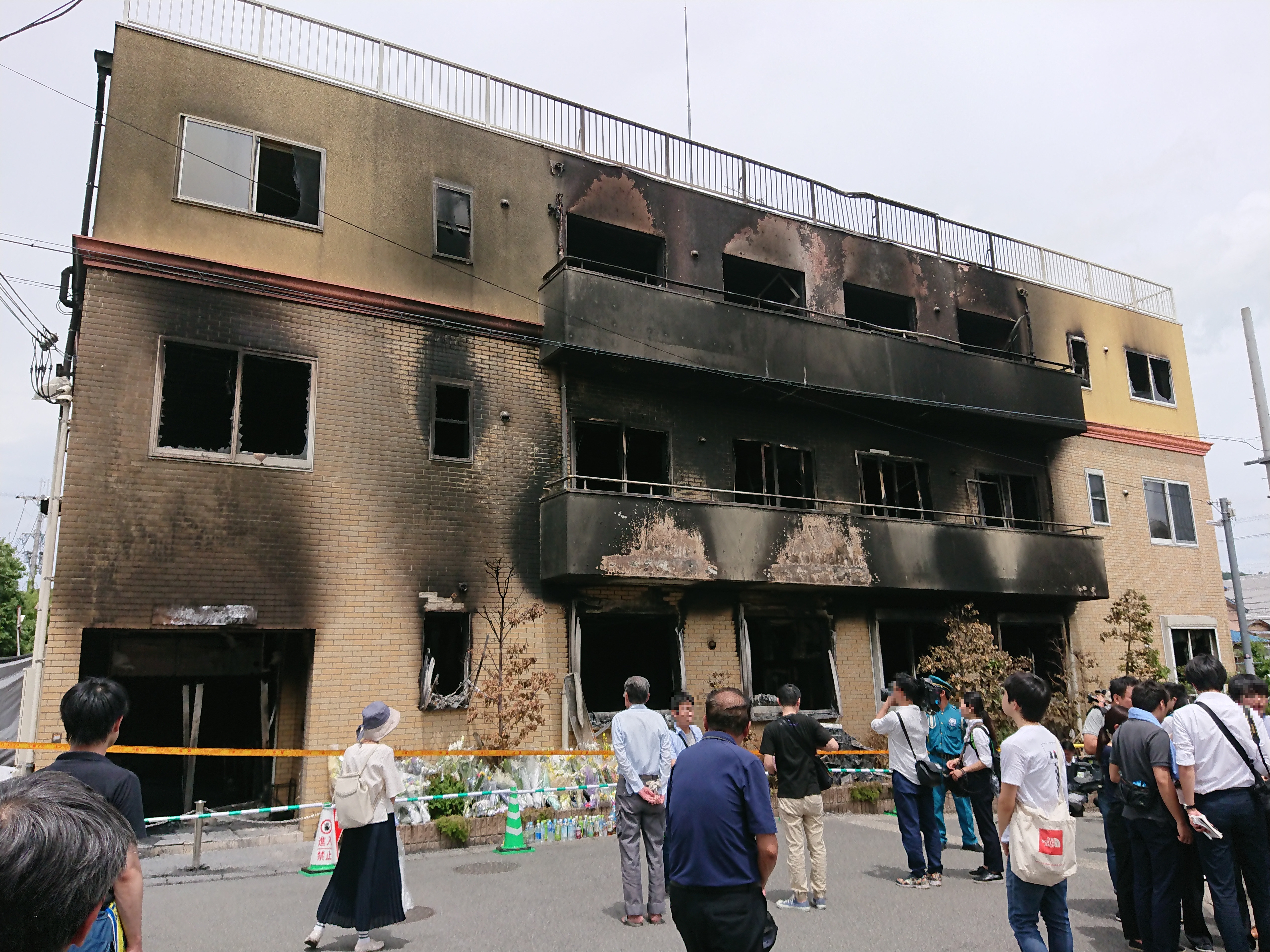|
Deir El-Muharraq
The Monastery of Virgin Mary in Koskam () or Deir el-Muharraq ( ar, الدير المحرق, lit=burned monastery, '), also known as the Muharraq Monastery, Virgin Mary monastery and Mount Koskam Monastery, is a monastic complex of the Coptic Orthodox Church of Alexandria in Egypt. Geography The Deir el-Muharraq complex is located on the Nile just south of Cusae (, ), in Asyut Governorate in Upper Egypt. It is south of Greater Cairo. Features The monastery is within the Coptic Orthodox Church of Alexandria diocese, with about 100 monks of ''Koinonia'' or community monasticism in residence. The stone fortress on Mount Koskam at Muharraq Monastery was built in the 6th or 7th century. The fortress chapel has a 12th-century lectern, dating to when the fortress was first repaired. The monastery's library has two entities, an ancient Coptic manuscripts library and archives, and a contemporary research and reading library. Churches The monastery complex has three churches: * 12th ... [...More Info...] [...Related Items...] OR: [Wikipedia] [Google] [Baidu] |
Coptic Orthodox Church Of Alexandria
The Coptic Orthodox Church ( cop, Ϯⲉⲕ̀ⲕⲗⲏⲥⲓⲁ ⲛ̀ⲣⲉⲙⲛ̀ⲭⲏⲙⲓ ⲛ̀ⲟⲣⲑⲟⲇⲟⲝⲟⲥ, translit=Ti.eklyseya en.remenkimi en.orthodoxos, lit=the Egyptian Orthodox Church; ar, الكنيسة القبطية الأرثوذكسية, translit=al-Kanīsa al-Qibṭiyya al-ʾUrṯūḏuksiyya), also known as the Coptic Orthodox Patriarchate of Alexandria, is an Oriental Orthodox Christian church based in Egypt, servicing Africa and the Middle East. The head of the church and the See of Alexandria is the Pope of Alexandria on the Holy Apostolic See of Saint Mark, who also carries the title of Father of fathers, Shepherd of Shepherds, Ecumenical Judge and the thirteenth among the Apostles. The See of Alexandria is titular, and today, the Coptic Pope presides from Saint Mark's Coptic Orthodox Cathedral in the Abbassia District in Cairo. The church follows the Coptic Rite for its liturgy, prayer and devotional patrimony. The church has approximately ... [...More Info...] [...Related Items...] OR: [Wikipedia] [Google] [Baidu] |
Herod The Great
Herod I (; ; grc-gre, ; c. 72 – 4 or 1 BCE), also known as Herod the Great, was a Roman Jewish client king of Judea, referred to as the Herodian kingdom. He is known for his colossal building projects throughout Judea, including his renovation of the Second Temple in Jerusalem and the expansion of the Temple Mount towards its north, the enclosure around the Cave of the Patriarchs in Hebron, the construction of the port at Caesarea Maritima, the fortress at Masada, and Herodium. Vital details of his life are recorded in the works of the 1st century CE Roman–Jewish historian Josephus. Herod also appears in the Christian Gospel of Matthew as the ruler of Judea who orders the Massacre of the Innocents at the time of the birth of Jesus, although most Herod biographers do not believe that this event occurred. Despite his successes, including singlehandedly forging a new aristocracy from practically nothing, he has still been criticised by various historians. His reign pola ... [...More Info...] [...Related Items...] OR: [Wikipedia] [Google] [Baidu] |
Arson In Africa
Arson is the crime of willfully and deliberately setting fire to or charring property. Although the act of arson typically involves buildings, the term can also refer to the intentional burning of other things, such as motor vehicles, watercraft, or forests. The crime is typically classified as a felony, with instances involving a greater degree of risk to human life or property carrying a stricter penalty. Arson which results in death can be further prosecuted as manslaughter or murder. A common motive for arson is to commit insurance fraud. In such cases, a person destroys their own property by burning it and then lies about the cause in order to collect against their insurance policy. A person who commits arson is referred to as an arsonist, or a serial arsonist if arson has been committed several times. Arsonists normally use an accelerant (such as gasoline or kerosene) to ignite, propel and directionalize fires, and the detection and identification of ignitable liquid r ... [...More Info...] [...Related Items...] OR: [Wikipedia] [Google] [Baidu] |
Terrorist Incidents In Egypt In 2013
Terrorism, in its broadest sense, is the use of criminal violence to provoke a state of terror or fear, mostly with the intention to achieve political or religious aims. The term is used in this regard primarily to refer to intentional violence during peacetime or in the context of war against non-combatants (mostly civilians and neutral military personnel). The terms "terrorist" and "terrorism" originated during the French Revolution of the late 18th century but became widely used internationally and gained worldwide attention in the 1970s during the Troubles in Northern Ireland, the Basque conflict, and the Israeli–Palestinian conflict. The increased use of suicide attacks from the 1980s onwards was typified by the 2001 September 11 attacks in the United States. There are various different definitions of terrorism, with no universal agreement about it. Terrorism is a charged term. It is often used with the connotation of something that is "morally wrong". Governments and ... [...More Info...] [...Related Items...] OR: [Wikipedia] [Google] [Baidu] |
Coptic History
Coptic history is the part of the history of Egypt that begins with the introduction of Christianity in Egypt in the 1st century AD during the Roman period, and covers the history of the Copts to the present day. Many of the historic items related to Coptic Christianity are on display in many museums around the world and a large number is in the Coptic Museum in Coptic Cairo. Apostolic foundation Egypt is identified in the Bible as the place of refuge that the Holy Family sought in its flight from Judea: "When he arose, he took the young Child and His mother by night and departed for Egypt, and was there until the death of Herod the Great, that it might be fulfilled which was spoken by the Lord through the prophet, saying, ''Out of Egypt I called My Son''" (Matthew 2:12-23). The Egyptian Church, which is now more than nineteen centuries old, regards itself as the subject of many prophecies in the Old Testament. Isaiah the prophet, in Chapter 19, Verse 19 says "In that day there w ... [...More Info...] [...Related Items...] OR: [Wikipedia] [Google] [Baidu] |
Buildings And Structures In Asyut Governorate
A building, or edifice, is an enclosed structure with a roof and walls standing more or less permanently in one place, such as a house or factory (although there's also portable buildings). Buildings come in a variety of sizes, shapes, and functions, and have been adapted throughout history for a wide number of factors, from building materials available, to weather conditions, land prices, ground conditions, specific uses, prestige, and aesthetic reasons. To better understand the term ''building'' compare the list of nonbuilding structures. Buildings serve several societal needs – primarily as shelter from weather, security, living space, privacy, to store belongings, and to comfortably live and work. A building as a shelter represents a physical division of the human habitat (a place of comfort and safety) and the ''outside'' (a place that at times may be harsh and harmful). Ever since the first cave paintings, buildings have also become objects or canvasses of much artistic ... [...More Info...] [...Related Items...] OR: [Wikipedia] [Google] [Baidu] |
Coptic Orthodox Monasteries In Egypt
Coptic may refer to: Afro-Asia * Copts, an ethnoreligious group mainly in the area of modern Egypt but also in Sudan and Libya * Coptic language, a Northern Afro-Asiatic language spoken in Egypt until at least the 17th century * Coptic alphabet, the script used for writing the Coptic language, encoded in Unicode as: ** Greek and Coptic (Unicode block), a block of Unicode characters for writing the Coptic language, from which Coptic was disunified in Unicode 4.1 ** Coptic (Unicode block), a block of Unicode characters for writing the Coptic language, introduced in Unicode 4.1 ** Coptic Epact Numbers, a block of Unicode characters for writing Coptic numerals * Coptic Orthodox Church of Alexandria or Coptic Church, the largest Christian church in Egypt and the Middle East * Coptic Catholic Church, an Alexandrian Rite particular Church * Coptic architecture, the architecture of the Copts * Coptic binding or Coptic sewing, methods of bookbinding employed by early Christians in Egypt Oth ... [...More Info...] [...Related Items...] OR: [Wikipedia] [Google] [Baidu] |
Persecution Of Copts
The persecution of Copts and the discrimination against Coptic Orthodox Christians are historic and widespread issues in Egypt. They are also prominent examples of the poor status of Christians in the Middle East despite the fact that the religion is native to the Middle East, and its practices are old in the country dating back to the Roman Era. Copts (Coptic: ''ou Remenkīmi en.E khristianos'', literally: "Egyptian Christian") are the Christ followers in Egypt, usually Oriental Orthodox, who currently make up 15% of the population of Egypt—the largest religious minority of that country. Copts have cited instances of persecution throughout their history and Human Rights Watch has noted "growing religious intolerance" and sectarian violence against Coptic Christians in recent years, as well as a failure by the Egyptian government to effectively investigate properly and prosecute those responsible. Since 2011 hundreds of Egyptian Copts have been killed in sectarian clashes, and ... [...More Info...] [...Related Items...] OR: [Wikipedia] [Google] [Baidu] |
Coptic Architecture
Coptic architecture is the architecture of the Copt, Coptic Christians, who form the majority of Christianity in Egypt, Christians in Egypt. Coptic churches range from great cathedrals such as Saint Mark's Coptic Orthodox Cathedral to the smallest churches in rural villages. Many ancient monasteries like Monastery of Saint Anthony also exist. Christian Church, Ancient Churches like the Hanging Church in Coptic Cairo carry important historical value to the Coptic Orthodox Church and the Copts in general. Origin and influence Some authorities trace the origins of Coptic architecture to Ancient Egyptian architecture, seeing a similarity between the plan of ancient Egyptian temples, progressing from an outer courtyard to a hidden inner sanctuary to that of Coptic churches, with an outer narthex or porch, and (in later buildings) a sanctuary hidden behind an iconostasis. Others see the earliest Coptic churches as progressing, like those of the Byzantine Empire, Byzantine and Roman ... [...More Info...] [...Related Items...] OR: [Wikipedia] [Google] [Baidu] |
Arson
Arson is the crime of willfully and deliberately setting fire to or charring property. Although the act of arson typically involves buildings, the term can also refer to the intentional burning of other things, such as motor vehicles, watercraft, or forests. The crime is typically classified as a felony, with instances involving a greater degree of risk to human life or property carrying a stricter penalty. Arson which results in death can be further prosecuted as manslaughter or murder. A common motive for arson is to commit insurance fraud. In such cases, a person destroys their own property by burning it and then lies about the cause in order to collect against their insurance policy. A person who commits arson is referred to as an arsonist, or a serial arsonist if arson has been committed several times. Arsonists normally use an accelerant (such as gasoline or kerosene) to ignite, propel and directionalize fires, and the detection and identification of ignitable liqui ... [...More Info...] [...Related Items...] OR: [Wikipedia] [Google] [Baidu] |








